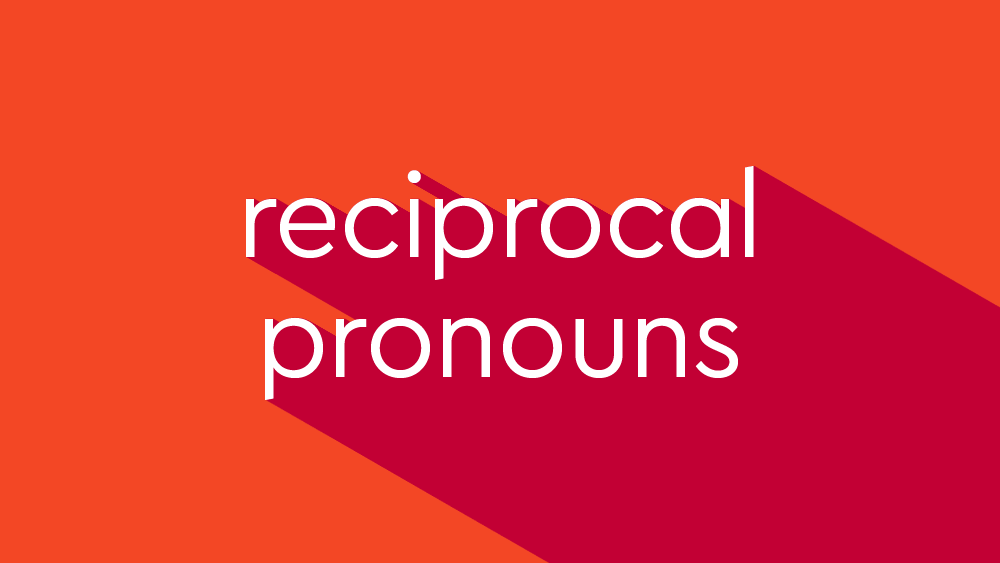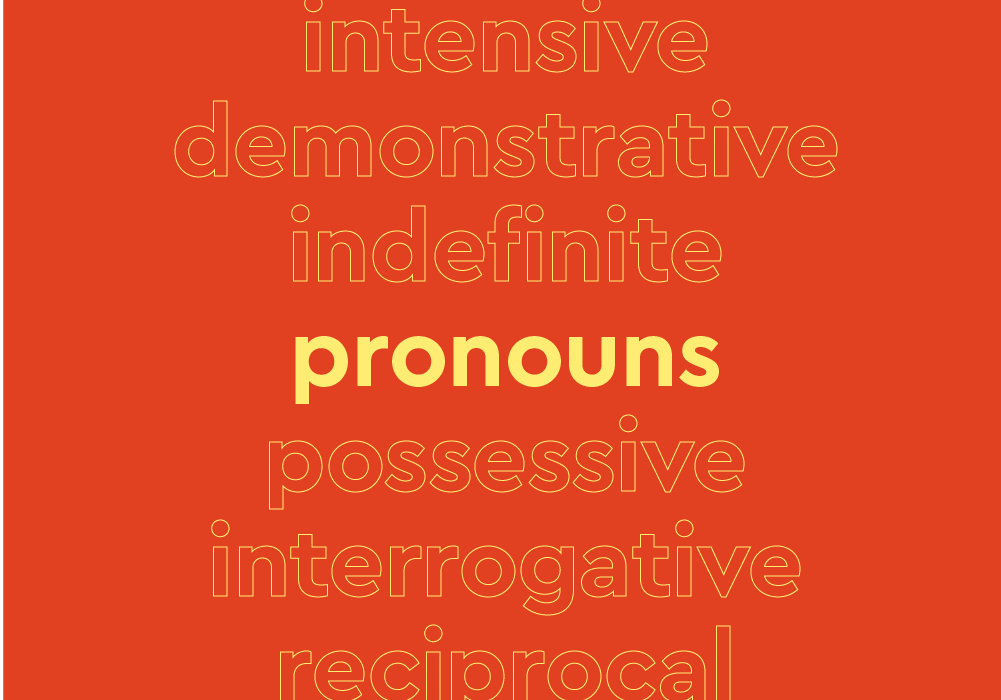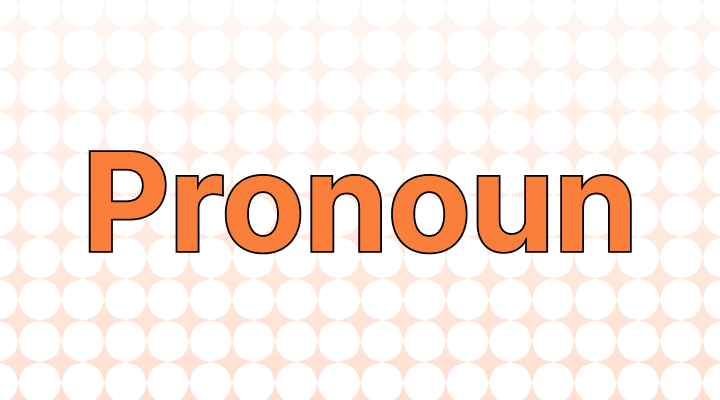A pronoun is a word that takes the place of a noun in a sentence to avoid repetition, such as "he," "she," and "it." Let's discover different types of pronoun with example sentences.

Understanding pronouns
Pronouns play a vital role in language by replacing nouns to avoid repetition and provide clarity in communication. They come in various forms and serve different functions in sentences. Let's explore the world of pronouns and their significance in English grammar.
List of pronouns
Personal pronouns:
- Subject/Subjective pronouns: I, you, he, she, it, we, they
- Object/Objective pronouns: me, you, him, her, it, us, them
- Possessive pronouns: mine, yours, his, hers, its, ours, theirs
- Reflexive pronouns: myself, yourself, himself, herself, itself, ourselves, yourselves, themselves
Other pronouns:
- Interrogative pronouns: who, whom, whose, what, which
- Demonstrative pronouns: this, that, these, those
- Relative pronouns: who, whom, whose, which, that
- Reciprocal pronouns: each other, one another
- Intensive pronouns: myself, yourself, himself, herself, itself, ourselves, yourselves, themselves
- Indefinite pronouns: all, another, any, anybody, anyone, anything, each, everybody, everyone, everything, few, many, nobody, none, one, several, some, somebody, someone, something
Types of pronouns
Subject pronouns
These pronouns act as the subject of a sentence. Common examples include "I," "you," "he," "she," "it," "we," and "they."
- She is studying for her exam.
- We went to the park yesterday.
- They are cooking dinner tonight.
- He is playing basketball with his friends.
- I am going to the movies later.
Object pronouns
Objective pronouns function as the object of a verb or preposition. Examples include "me," "you," "him," "her," "it," "us," and "them."
- They offered her the job.
- He gave me a present for my birthday.
- She helped him with his homework.
- We are meeting them at the restaurant.
- I saw you at the store yesterday.
Possessive pronouns
These pronouns indicate possession or ownership. Common examples are "mine," "yours," "his," "hers," "its," "ours," and "theirs."
- The laptop is mine; the one on the table is yours.
- This book is hers; that one is his.
- The cat is ours; we adopted it from the shelter.
- These clothes are theirs; they left them here last week.
- The decision is yours; you have to make it yourself.
Reflexive pronouns
Reflexive pronouns are used when the subject and object of a sentence are the same. They reflect back to the subject and emphasize that the action affects the subject itself. Common examples include, "myself," "yourself," "himself," "herself," and "themselves."
- I hurt myself while cooking dinner.
- He taught himself how to play the guitar.
- The computer repaired itself automatically.
- We enjoyed ourselves at the beach yesterday.
- You need to discipline yourselves and focus on your studies.
Interrogative pronouns
Interrogative pronouns are used to ask questions. Examples include "who," "whom," "what," "which," and "whose." For example, "Whose bag is this?"
- Who is going to the party tonight?
- Whom did you invite to the wedding?
- What are you doing this weekend?
- Which restaurant should we go to for dinner?
- Whose car is parked outside?
Demonstrative pronouns
Demonstrative pronouns point to specific things or people. They include "this," "that," "these," and "those." For instance, "This is my car."
- This is my favorite sweater.
- That is his bike parked over there.
- These are the books I borrowed from the library.
- Those are the shoes she wore to the party.
- This is the song I was telling you about.
Relative pronouns
Relative pronouns are used to connect clauses or phrases to a noun or pronoun. They include "who," "whom," "whose," "which," and "that."
- The person who called you is my sister.
- She is the woman whom I met at the party.
- The book whose cover is torn belongs to me.
- The car, which is parked outside, needs repairs.
- The movie that we watched last night was amazing.
Reciprocal pronouns
Reciprocal pronouns are used when two or more subjects are acting in the same way towards each other. The main reciprocal pronouns are "each other" and "one another."
- They hugged each other before saying goodbye.
- The team members supported one another during the competition.
Intensive pronouns
Intensive pronouns emphasize a preceding noun or pronoun. They are identical in form to reflexive pronouns.
- I myself saw him at the concert.
- You yourself can solve this problem.
- She herself completed the project.
- The device itself is not the issue.
- They themselves organized the event.
Indefinite pronouns
Indefinite pronouns refer to non-specific persons or things. They include "anyone," "anything," "someone," "something," "everyone," "everything," "nobody," "nothing," "somebody," "somebody," "anybody," and "everything."
- Is anyone available to help me?
- I need to tell you something important.
- There is nothing to worry about.
- Somebody called while you were out.
- Everything will be okay.
Pronouns in the modern world
In today's digital age and diverse society, pronouns play an increasingly important role in reflecting individual identities and inclusivity. Social media platforms provide spaces for users to display their preferred pronouns in their profiles, respecting their gender identities. LGBTQ+ communities advocate for the use of gender-neutral pronouns like "they/them" to accommodate non-binary and gender-nonconforming individuals.
As language evolves to embrace inclusivity, the use of personal pronouns extends beyond traditional binary categories. People are encouraged to ask others for their pronouns and use them respectfully. This shift acknowledges the diversity of identities and fosters a more inclusive and supportive environment for all.
Conclusion
Pronouns are essential linguistic tools that facilitate clear and efficient communication in English. From subject pronouns to possessive pronouns, each type serves a unique purpose in conveying meaning. As society progresses, the recognition and validation of diverse identities through pronoun usage reflect broader social changes and values. By embracing inclusive language practices and respecting individuals' pronoun choices, we create a more welcoming and understanding world for everyone.

Want to sound like a native speaker?
Engram’s AI-powered grammar checker makes your English sound like a native speaker’s, suggesting natural English expressions on top of fixing grammar, spelling, punctuation, word order, and vocabulary.

Reference:
https://dictionary.cambridge.org/grammar/british-grammar/relative-pronouns















